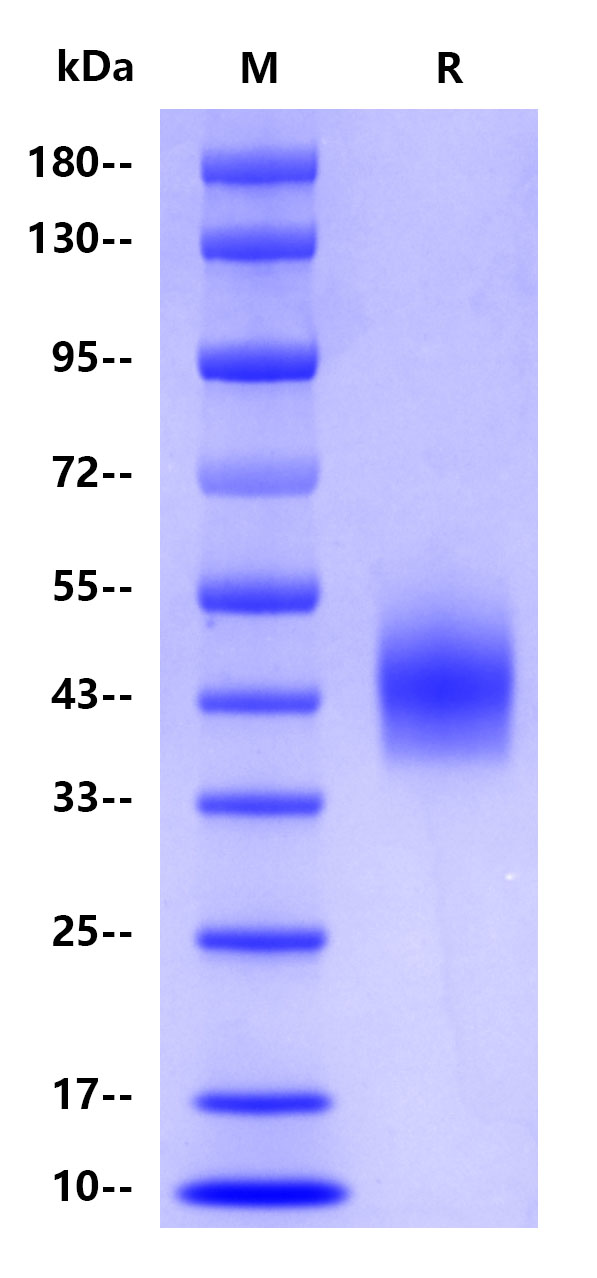Protein sequence(P20138, Asp18-His259, with C-10*His)
DPNFWLQVQESVTVQEGLCVLVPCTFFHPIPYYDKNSPVHGYWFREGAIISRDSPVATNKLDQEVQEETQGRFRLLGDPSRNNCSLSIVDARRRDNGSYFFRMERGSTKYSYKSPQLSVHVTDLTHRPKILIPGTLEPGHSKNLTCSVSWACEQGTPPIFSWLSAAPTSLGPRTTHSSVLIITPRPQDHGTNLTCQVKFAGAGVTTERTIQLNVTYVPQNPTTGIFPGDGSGKQETRAGVVHGGGGSHHHHHHHHHH
>95% by SDS-PAGE
12 months from date of receipt, -20 ℃ to -70 °C as supplied. 1 month,
2 to 8 °C under sterile conditions after reconstitution.
Please avoid repeated freeze-thaw cycles.
CD33 is a transmembrane receptor expressed on cells of myeloid lineage. It is usually considered myeloid-specific, but it can also be found on some lymphoid cells. The level of CD33 was found to be increased in the AD brain, which positively correlated with amyloid plaque burden and disease severity. More importantly, CD33 led to the impairment of microglia-mediated clearance of Aβ, which resulted in the formation of amyloid plaques in the brain.
Immobilized Human CD33, His Tag at 2 μg/mL (50 μL/well) can bind CD33 Recombinant Rabbit mAb (SDT-269-171) (S0B2209) with EC50 of 3.718-5.786 ng/mL.
